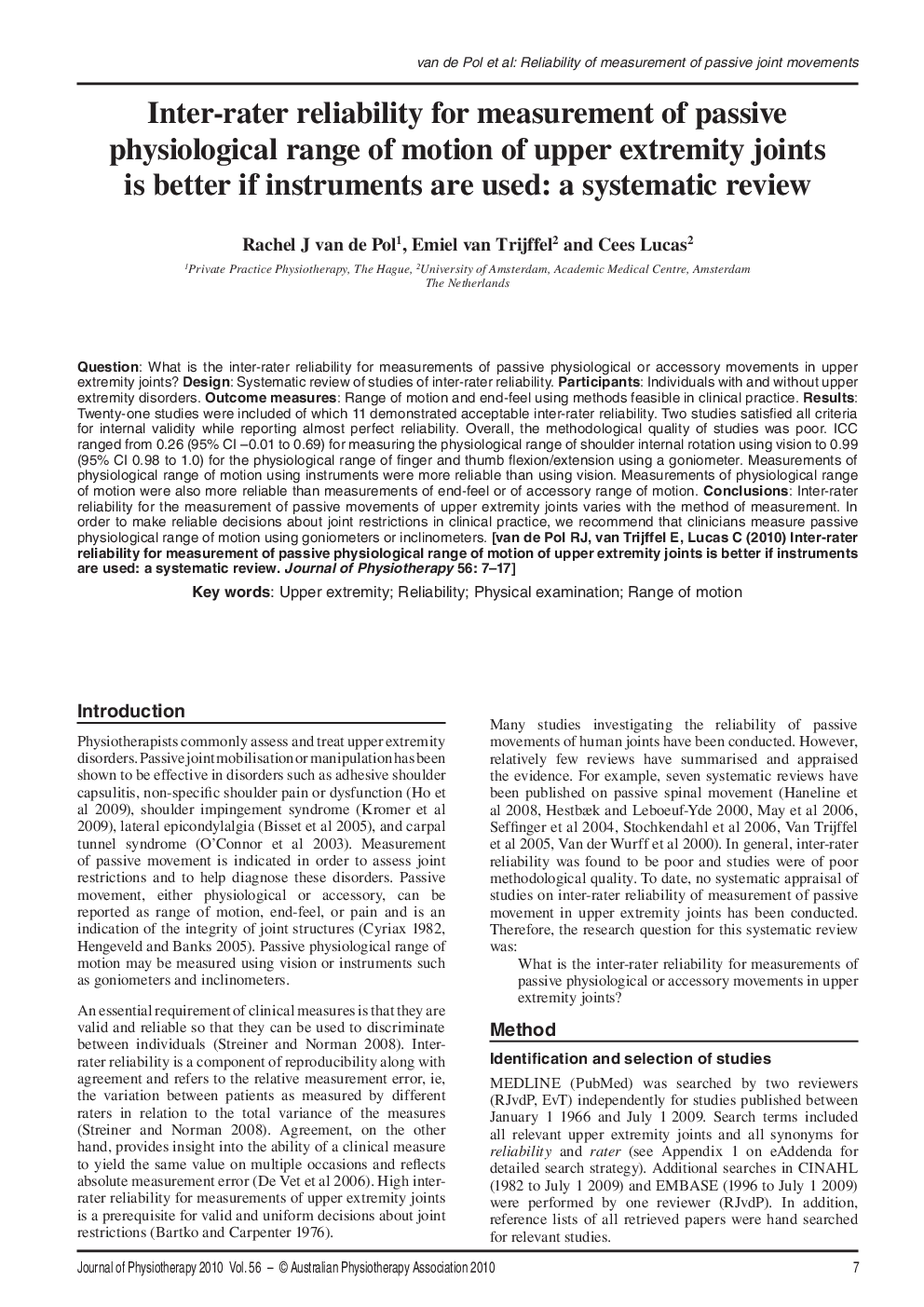| Article ID | Journal | Published Year | Pages | File Type |
|---|---|---|---|---|
| 2622151 | Journal of Physiotherapy | 2010 | 11 Pages |
QuestionWhat is the inter-rater reliability for measurements of passive physiological or accessory movements in upper extremity joints?DesignSystematic review of studies of inter-rater reliability.ParticipantsIndividuals with and without upper extremity disorders.Outcome measuresRange of motion and end-feel using methods feasible in clinical practice.ResultsTwenty-one studies were included of which 11 demonstrated acceptable inter-rater reliability. Two studies satisfied all criteria for internal validity while reporting almost perfect reliability. Overall, the methodological quality of studies was poor. ICC ranged from 0.26 (95% CI –0.01 to 0.69) for measuring the physiological range of shoulder internal rotation using vision to 0.99 (95% CI 0.98 to 1.0) for the physiological range of finger and thumb flexion/extension using a goniometer. Measurements of physiological range of motion using instruments were more reliable than using vision. Measurements of physiological range of motion were also more reliable than measurements of end-feel or of accessory range of motion.ConclusionsInter-rater reliability for the measurement of passive movements of upper extremity joints varies with the method of measurement. In order to make reliable decisions about joint restrictions in clinical practice, we recommend that clinicians measure passive physiological range of motion using goniometers or inclinometers.
